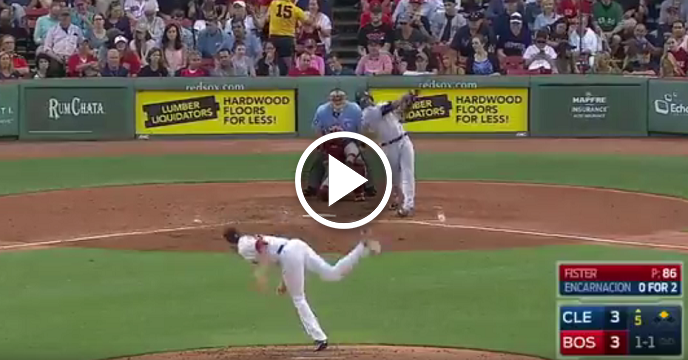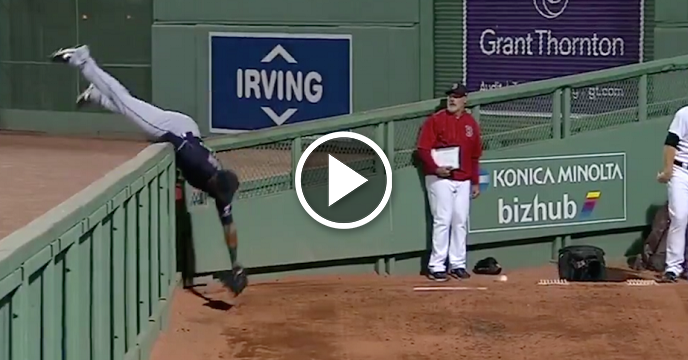The year did not start well for Clay Buchholz. His 8.69 ERA in his 29 innings in April was the worst mark among Major League pitchers for the month. With a 6.85 FIP and a 5.25 xFIP, the Boston Red Sox pitcher was terrible by any measure you could find. He didn’t straighten things in May either. His 5.60 ERA, 5.36 FIP and 4.88 xFIP were improved, but they still put Buchholz among the worst pitcher of the month. Things looked bad for the young righty. His change up was far less effective than it had been in the past and his fastball was hardly missing any bats.
Thirteen days into June, all of those early season struggles appear to be behind him. In fact, by ERA Clay Buchholz has been the fourth best pitcher in baseball this month. Only R.A. Dickey, who just racked up 32.2 scoreless innings, Matt Cain, who just threw one of the most dominate perfect games in history, and C.J. Wilson have been better than Buchholz this month. He has already thrown 24 innings in the month and he has allowed just three runs while striking out 22 and walking just five giving him an ERA of 1.13 for the month.
Given just how bad he was early in the year, it is easy for people to overlook Buchholz now. His season stats are still being dragged down by his terrible April and May performances. For the whole year, he has a terrible looking 5.38 ERA matched with a 5.45 FIP. xFIP is only slightly kinder with a 4.67 mark, but no one looking at his season stats is going to mistake Clay Buchholz for an elite pitcher.
An elite pitcher is exactly what he has been since his May 27 start. Beginning with that start, nearly everything that was plaguing Buchholz has been fixed. Prior to that start Buchholz was striking out just 11.4% of hitters he faced, well below his career norm of 17.6%. That was made even worse as he walked hitters at the same rate, far above his 9.6% career norm. Beginning with his seven inning, six strikeout, two run gem on the 27, all of that has changed. He has punched out 23.7% and walked just 5% of hitters in those last four starts.
Looking at his individual pitches, the difference is even more pronounced. Clay Buchholz had one of the game’s elite change ups prior to 2012, with a 22% whiff rate for the pitch. He matched it with a ground ball inducing four seamer and a cutter that could also miss bats. Add to that a plus curve and it was easy to imagine Buchholz just getting better and better as he matured. However, early in 2012, almost nothing was working for him. The spin rates on virtual all his pitches were down and the whiff rates fell off the table. His change was a disaster, with just an 11.3% whiff rate prior to May 27 and his fast ball, never a great swing and miss offering, was getting almost half the swings and misses it once did. Only his curve was working for him to start the year and he was forced to rely on it more than ever before.
In his past four starts, every pitch has resembled the pre-2012 version. His fastball and his cutter are still less whiff-inducing than they were from 2009-2011, but they are far closer to his career norms than before. His change up, however, is back in full force, missing 22% of swings once again. Additionally, the reliance on the curve earlier has paid off as now Buchholz has two high quality breaking pitches to get hitters out with. He is mixing the two more than ever before and the result is more batters heading back to the dugout.
While four games is not a truly relevant sample size, it is important to consider the context here. These four games have not seen Buchholz do anything that he has not done regularly in the past. The only thing that is even remotely different about him from his 2009-2011 seasons is the increased potency of the curve. He could actually improve two of his main pitches simply by getting them back to where they were in those previous seasons. The real outlier is his dismal performance prior to May 27. Whether it was rust from the time he missed to injury or mechanical issues, Clay Buchholz was not the pitcher he has been for nearly all of his entire pro career in those early months. Going forward, it is unreasonable to expect him to maintain a 1.13 ERA for the remainder of the year, but giving to much weight to his early starts is almost as unreasonable.
Clay Buchholz is back and he may even be better than ever.
 Share
Share 










